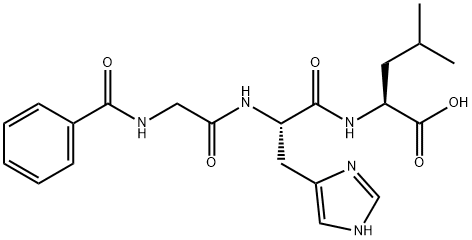1,3-Dimethylbutylamine
- CAS NO.:108-09-8
- Empirical Formula: C6H15N
- Molecular Weight: 101.19
- MDL number: MFCD00008088
- EINECS: 203-549-6
- SAFETY DATA SHEET (SDS)
- Update Date: 2024-12-18 14:08:52

What is 1,3-Dimethylbutylamine?
Chemical properties
CLEAR COLOURLESS LIQUID
The Uses of 1,3-Dimethylbutylamine
1,3-Dimethylbutylamine has been used to study the application of unfunctionized polymethacrylate resin (TSKgel G3000PWXL) as a stationary phase in liquid chromatography with UV detection.
General Description
A liquid with a fishlike odor. Less dense than water. Flash point 39 - 55°F. Vapors heavier than air. May be toxic by ingestion, inhalation and skin absorption.
Air & Water Reactions
Highly flammable. Slightly soluble in water. May be air sensitive.
Reactivity Profile
1,3-Dimethylbutylamine neutralizes acids in exothermic reactions to form salts plus water. May be incompatible with isocyanates, halogenated organics, peroxides, phenols (acidic), epoxides, anhydrides, and acid halides. Flammable gaseous hydrogen may be generated in combination with strong reducing agents, such as hydrides.
Health Hazard
May cause toxic effects if inhaled or ingested/swallowed. Contact with substance may cause severe burns to skin and eyes. Fire will produce irritating, corrosive and/or toxic gases. Vapors may cause dizziness or suffocation. Runoff from fire control or dilution water may cause pollution.
Fire Hazard
Flammable/combustible material. May be ignited by heat, sparks or flames. Vapors may form explosive mixtures with air. Vapors may travel to source of ignition and flash back. Most vapors are heavier than air. They will spread along ground and collect in low or confined areas (sewers, basements, tanks). Vapor explosion hazard indoors, outdoors or in sewers. Runoff to sewer may create fire or explosion hazard. Containers may explode when heated. Many liquids are lighter than water.
Safety Profile
Poison by intravenous route. Moderately toxic by ingestion and skin contact. Mildly toxic by inhalation. A dangerous fire and explosion hazard when exposed to heat or flame; can react vigorously with oxidizing materials. To fight fire, use foam, CO2 dry chemical. When heated to decomposition it emits toxic fumes of NOx See also MINES.
Properties of 1,3-Dimethylbutylamine
| Melting point: | -40.7°C (estimate) |
| Boiling point: | 108-110 °C(lit.) |
| Density | 0.717 g/mL at 25 °C(lit.) |
| refractive index | n |
| Flash point: | 55 °F |
| storage temp. | Flammables area |
| solubility | Chloroform (Sparingly), Ethyl Acetate (Slightly) |
| form | Liquid |
| pka | 11.07±0.42(Predicted) |
| color | Clear colorless |
| Stability: | Volatile |
| CAS DataBase Reference | 108-09-8(CAS DataBase Reference) |
| NIST Chemistry Reference | 2-Pentanamine, 4-methyl-(108-09-8) |
| EPA Substance Registry System | 1,3-Dimethylbutylamine (108-09-8) |
Safety information for 1,3-Dimethylbutylamine
| Signal word | Danger |
| Pictogram(s) |
 Flame Flammables GHS02  Corrosion Corrosives GHS05  Exclamation Mark Irritant GHS07 |
| GHS Hazard Statements |
H225:Flammable liquids H302:Acute toxicity,oral H314:Skin corrosion/irritation |
| Precautionary Statement Codes |
P210:Keep away from heat/sparks/open flames/hot surfaces. — No smoking. P233:Keep container tightly closed. P280:Wear protective gloves/protective clothing/eye protection/face protection. P301+P312:IF SWALLOWED: call a POISON CENTER or doctor/physician IF you feel unwell. P303+P361+P353:IF ON SKIN (or hair): Remove/Take off Immediately all contaminated clothing. Rinse SKIN with water/shower. P305+P351+P338:IF IN EYES: Rinse cautiously with water for several minutes. Remove contact lenses, if present and easy to do. Continuerinsing. |
Computed Descriptors for 1,3-Dimethylbutylamine
| InChIKey | UNBMPKNTYKDYCG-UHFFFAOYSA-N |
1,3-Dimethylbutylamine manufacturer
Shreyasvi Lifesciences Pvt Ltd
New Products
(S)-3-Aminobutanenitrile hydrochloride 4-Methylphenylacetic acid N-Boc-D-alaninol N-BOC-D/L-ALANINOL Tert-butyl bis(2-chloroethyl)carbamate 3-Morpholino-1-(4-nitrophenyl)-5,6-dihydropyridin- 2(1H)-one Furan-2,5-Dicarboxylic Acid Tropic acid 1-Bromo-3,5-Di-Tert-Butylbenzene S-2-CHLORO PROPIONIC ACID ETHYL ISOCYANOACETATE 2-Bromo-1,3-Bis(Dimethylamino)Trimethinium Hexafluorophosphate 4-IODO BENZOIC ACID 3-NITRO-2-METHYL ANILINE 1-(2,4-DICHLOROPHENYL) ETHANAMINE (2-Hydroxyphenyl)acetonitrile 4-Bromopyrazole 2-(Cyanocyclohexyl)acetic acid 4-methoxy-3,5-dinitropyridine 1-(4-(aminomethyl)benzyl)urea hydrochloride 2-aminopropyl benzoate hydrochloride diethyl 2-(2-((tertbutoxycarbonyl)amino) ethyl)malonate tert-butyl 4- (ureidomethyl)benzylcarbamate Ethyl-2-chloro((4-methoxyphenyl)hydrazono)acetateRelated products of tetrahydrofuran








You may like
-
 108-09-8 1,3 - Dimethylbutylamine 98%View Details
108-09-8 1,3 - Dimethylbutylamine 98%View Details
108-09-8 -
 1,3-Dimethylbutylamine CAS 108-09-8View Details
1,3-Dimethylbutylamine CAS 108-09-8View Details
108-09-8 -
 1,3-Dimethylbutylamine CAS 108-09-8View Details
1,3-Dimethylbutylamine CAS 108-09-8View Details
108-09-8 -
 1975-50-4 98%View Details
1975-50-4 98%View Details
1975-50-4 -
 2-HYDROXY BENZYL ALCOHOL 98%View Details
2-HYDROXY BENZYL ALCOHOL 98%View Details
90-01-7 -
 2-Chloro-1,3-Bis(Dimethylamino)Trimethinium Hexafluorophosphate 221615-75-4 98%View Details
2-Chloro-1,3-Bis(Dimethylamino)Trimethinium Hexafluorophosphate 221615-75-4 98%View Details
221615-75-4 -
 14714-50-2 (2-Hydroxyphenyl)acetonitrile 98+View Details
14714-50-2 (2-Hydroxyphenyl)acetonitrile 98+View Details
14714-50-2 -
 118753-70-1 98+View Details
118753-70-1 98+View Details
118753-70-1